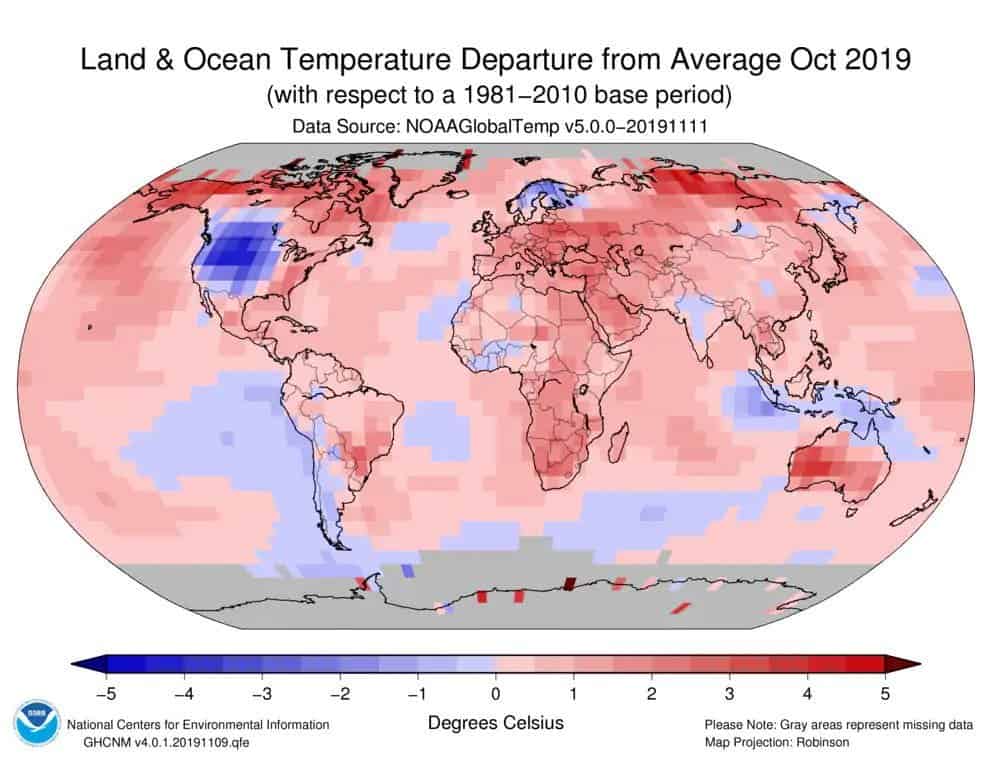As countries’ climate pledges remain far from what was agreed at the Paris Agreement, this year will likely be the Earth’s second or third warmest year on the calendar since humankind started collecting data on temperature since 1880, according to newly released data.

The National Oceanic and Atmospheric Administration (NOAA) released its new report and argued that there’s an 85% possibility that 2019 will rank as the second warmest. The chance of this year being on the top-five-warmest years is basically guaranteed at 99%, according to NOAA’s report.
The new data reaffirms the influence caused by humankind on global warming. This was especially relevant this year as there was an absence of El Niño in the Pacific Ocean, a phenomenon linked with the hottest years as they increase global ocean temperatures.
The ten warmest Octobers happened since 2003, while the top-five warmest occurred since 2015. This year’s October was the 43rd consecutive October to be warmer than the average seen in the 20th century and the 418th straight warmer-than-average month.
Global land and ocean temperatures have been registered at 1.69 degrees (0.94 Celsius) above the 20th-century average according to NOAA’s data. This is 0.16 of a degree cooler than the record warmest year-to-date, set in 2016.
The trend is clear and overwhelming: mankind’s greenhouse gas emissions are causing the world to rise up at a startling pace and without quick and drastic action, it will continue to rise even more.
NOAA is not the single agency measuring global temperatures, so their results might be a bit different regarding this year. For example, while NOAA leaves parts of the Artic out of its analysis, while NASA interpolates temperatures from the Artic, assuming the temperatures in the region are similar to their closest observation location.
While October was the second hottest month for NASA and NOAA, it was even hotter according to the European Union’s Copernicus Climate Change Service, which claimed October was the main hottest month so far this year.
But, disregarding the differences between the agencies, what’s most important is the long-term trend of decades of data, which shows growing amounts of greenhouse gases released to the atmosphere – with human activities as the main contributors to those gases. The elephant is in the room — we could debate the size of its ears and eyes, but we can’t deny its existence.
The record temperatures of October, NOAA argued, were present in areas of northeastern Canada, the North and Western Pacific Ocean, the South Atlantic Ocean and also parts of Africa, Europe, the Middle East, the Indian Ocean, and South America. The single region of record cold for October was in the Western United States.
With the current climate pledges of countries, temperatures are in line with exceeding the three Celsius degrees (37.4 Fahrenheit) growth, according to an analysis of Climate Action Tracker. The Paris Agreement committed countries to limit the temperature increase to two Celsius degree (35.6 Fahrenheit), making efforts to limit it to 1.5 Celsius degrees (34.7 Fahrenheit).









